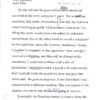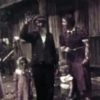Resources & Recommendations for Teaching The Holocaust At the Elementary Level
Compiled by Hannah Baker
Bibliography
- Bunting, Eve. 1980. Terrible Things: An Allegory of the Holocaust. Philadelphia, PA: The Jewish Publication Society.
- Freedman, Russell. 2016. We Will Not Be Silent: The White Rose Student Resistance Movement That Defied Adolf Hitler. NY: Clarion Books.
- Friedman, Carl. 1991. Nightfather. NY: Persea Books.
- Heuvel, Eric. 2007. The Search. NY: Farrar, Straus, & Giroux.
- Hoose, Phillip. 2015. The Boys Who Challenged Hitler: Knud Peterson and the Churchill Club. NY: Farrar, Straus, & Giroux.
- Innocenti, Roberto. 1985. Rose Blanche. NY: Creative Education, Inc.
- Richter, Hans Peter. 1961. Friedrich. NY: Puffin Books.
- Rogasky, Barbara. 1988. Smoke and Ashes: The Story of the Holocaust. NY: Holiday House.
- Rubin, Susan Goldman. 2005. The Flag With 56 Stars: A Gift From The Survivors of Mauthausen. NY: Holiday House.
- Ward, Geoffrey C. and Ken Burns. 2007. The War: An Intimate History 1941-1945. NY: Alfred A. Knopf.
- Warren, Andrea. Reprint 2002. Surviving Hitler: A Boy in the Nazi Death Camps. NY: Harpercollins.
- “Teaching Young Children about the Holocaust” https://website.education.wisc/edu/sschweber/pub_pdfs/bookchap2.pdf
- Imre, Matt. “The Holocaust: Graphic Novels” teenlibrarian.co.uk/2012/01/27/the-holocaust-graphic-novels/
- Jaffe, Meryl. “Using Graphic Novels in Education: Teaching the Holocaust with Comics” cbldf.org/2016/05/using-graphic-novels-in-education-teaching-the-holocaust-with-comics/
- Matthews, Dona. “How Should You Talk to Your Child about the Holocaust?” https://www.psychologytoday.com/us/blog/going-beyond-intelligence/201811/how-should-you-talk-you-child-about-the-holocaust
- Moline, Ann. “Discussing the Holocaust with Children” https://www.myjewishlearning.com/article/discussing-the-holocaust-with-children/
- Summers, Keyonna. “5 Ways to Talk to Children About the Holocaust” https://www.unlv.edu/news/article/5-ways-talk-children-about-holocaust
“Those who fail to learn from history are condemned to repeat it.” – Winston Churchill
While young children may be too young to understand and internalize the horrors of the Holocaust we can teach them the concepts of tolerance, working in small groups, and appreciating the uniqueness of others. Listed are a few activities that could be used in the classroom to reinforce these concepts.
- Watch the excerpt from the movie The King and I where the children are being taught the song “Getting to Know You”. How are they behaving toward each other? For example, they are bowing/curtsying, shaking hands, etc. – showing respect for each other. Learn the lyrics and then begin the practice of “getting to know your classmates.”
- Have students pair up and interview each other to find out how they got their name or nickname. Student pairs can then introduce each other to the class using information learned in the interview.
- Go on a classmate Scavenger Hunt to learn more about each other. The Scavenger Hunt chart is found at the end of this section.
- Play Roll the Die and Tell. The rules are found at the end of this section.
- Create group projects that take an assembly line approach to complete – each person in the group being responsible for one portion of the project. For example, wrapping packages, decorating a cake, decorating cookies, etc. Let students decide what qualities they have that could help contribute to the success of the project.
- Have students make “I am special because…” badges or posters.
- Role play situation involving bullying behaviors – situations may simulate being bullied or witnessing bullying behavior. Discuss ways in which these situations can be handled.
- Create an Anti-Bullying Campaign. Elements of this campaign might be recognizing bullying behaviors; what to do if you’re being bullied or have witnessed such behaviors; advice slogans; posters, etc.
Additional materials and suggestions can be found at:
Downloads
- Activity Sheet: Scavenger Hunt
- Activity Sheet: Roll The Die And Tell



